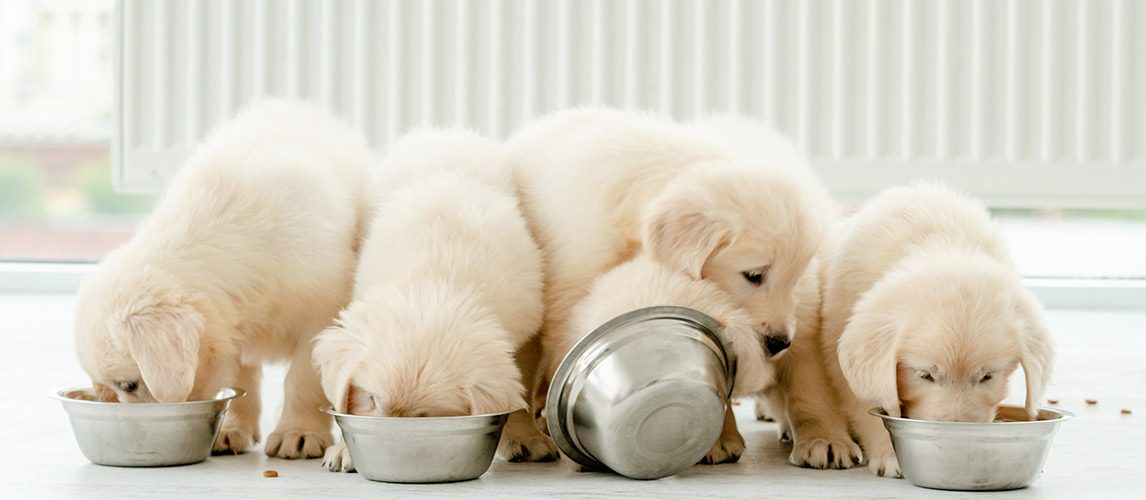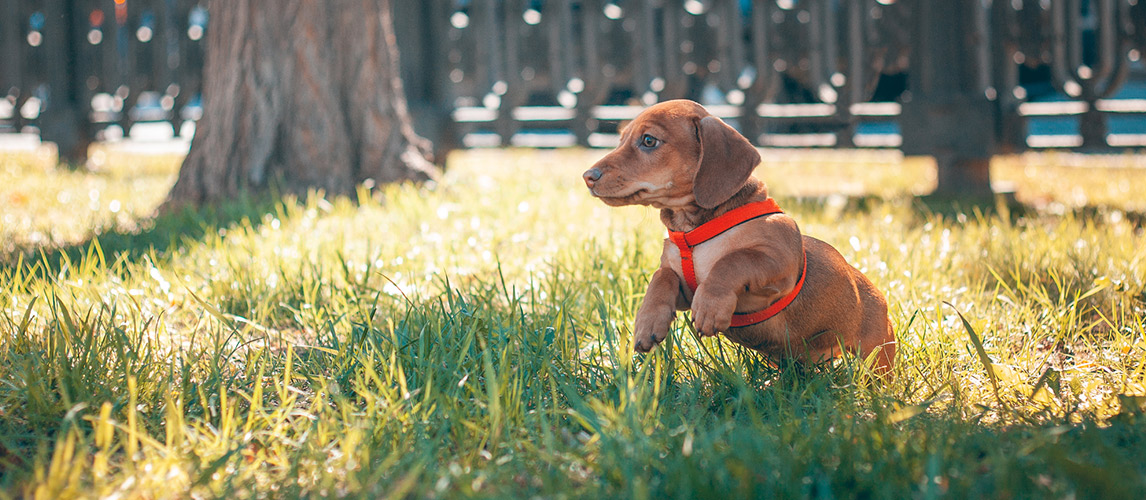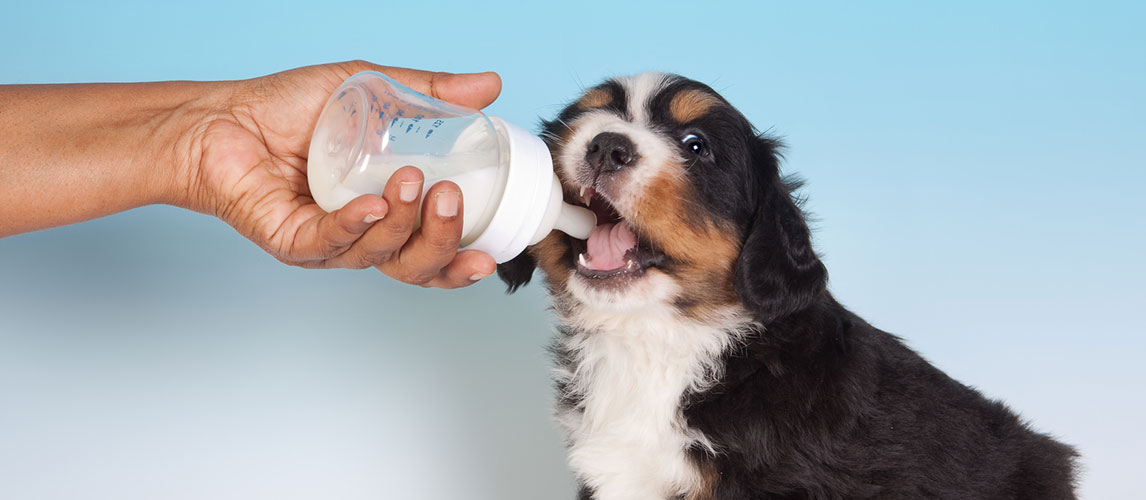So you are thinking about getting a sweet little puppy, but are you prepared for their essential care? It can be hard to know where to start when you are caring for a new pet, and a lot of advice can be very long or complicated. To give you a simple place to start, we have compiled a list of 5 essentials that you will need to give your puppy a great life. Hopefully, in this article we will provide you with the basics of what you need to know, but you can also use these categories to direct the next steps of your puppy research.
Nutritious Puppy Food
You may not realize it, but puppies have different needs to adult dogs. If you have only ever adopted adult dogs, or never had a dog before at all, you might think that grabbing any old dog food will do. However, just like babies have a different diet from adult humans, puppies have different nutritional needs from their parents.
These differences stem from all the developing and growth that puppies are going through. Their organs, joints, muscles, bones, immune system, and much more are growing and getting stronger every single day, and this requires a huge amount of minerals, vitamins, and other nutrients. The best puppy food will support every aspect of their growth through high concentrations of protein for growth, fat for energy and more essential minerals, such as calcium for strong bones. The worst puppy food may not only lack these essential ingredients, but will have high levels of salt, preservatives and sugar, which can lead to obesity.
Related Post: Calcium Supplements for Dogs
Although there are many sides to the debate, we would recommend that you offer your puppy dry puppy food. This is because wet puppy food can be as much as 75% water, which waters down the nutritional content of the food. Dry food is also considered to be better for your puppy’s teeth because it can remove plaque and is less likely to stick between the teeth. You may, however, want to consider a mixed diet of dry and wet puppy food to ensure you are getting the best of both worlds.
You should switch to dog food after about one year. The reason behind this is that it usually takes approximately this long for puppies to grow to at least 80% of their adult size, which is when their rapid growth begins to slow down and, gradually, stop. Without this growth, they no longer need extra protein and fat to support their high metabolisms. There are circumstances in which your puppy may need to move to dog food earlier, but this would be under the advice of your veterinarian.
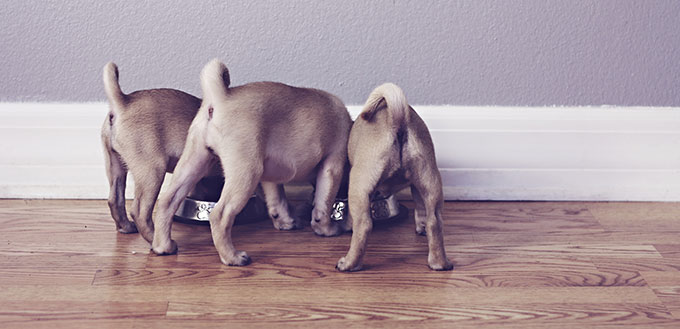
Essential Grooming Equipment
Keeping your puppy healthy is not just about eating good food and preventing any internal problems, it is also about caring for potential external issues that could crop up with their coat, paws, and teeth. You must be prepared to regularly groom your puppy, and the absolute bare essentials of puppy grooming require:
You may consider going to a professional groomer to groom your puppy, but this can be expensive and can waste a good opportunity to bond with your puppy. By all means, seek the help of a professional to help guide your own grooming techniques and to ensure your dog gets one or two seriously good cleans a year, but cleaning your own puppy gives them the opportunity to get used to grooming from an early age, and will allow the two of you to build your relationship.
Brushing your puppy’s teeth, for example, is vital for their health. Gum disease is, unfortunately, far too common in dogs, and the early stages have usually already developed by the time a dog is just 3 years old. Ideally, you would brush your dog’s teeth after every meal, but, as that can be a bit of a struggle, most professionals advocate a schedule of three times a week. There are a number of toothbrushes you can try, from specially-sized small brushes to easy-to-control finger brushes. You may have to try out a few different types to find what works best for you and your best friend. The most important thing is for you to make the experience as positive as possible to encourage cooperation in the future.
Your puppy’s coat also needs regular care and maintenance. Coats can vary widely from breed to breed, so it is difficult to offer one-size-fits-all advice. Generally, short, smooth coats require less care than long or curly coats. Many coats may also require multiple different brushes and combs to de-tangle and then smooth the coat. Your routine is also likely to be affected by your puppy’s shedding cycle. Broadly speaking, there are five coat types that your puppy may fit into:
- Smooth coats, which are relatively low-maintenance
- Double coats, which have an extra layer of fur for insulation
- Long coats, which will require daily care
- Wire coats, which can get tangled and matted very easily
- Curly coats, which will also encourage tangles
Similarly, your puppy will require a bath. However, it is actually a bad idea to wash a dog too often, as you will be stripping them of essential oils that their skin and coat needs. Under normal circumstances, you should give your dog up to four baths a year when they have gotten particularly dirty. Do not bathe a puppy until they are older than 6 weeks because very young puppies struggle to regulate their own body temperatures and water can cause a serious chill. The bath experience may also be too stressful for their little bodies to handle.
Other grooming techniques that you need to know about, and get your puppy used to, include:
- Clipping their nails, which can vary depending on puppy activity and lifestyle.
- Expressing anal glands, which are the glands that secrete the smells other dogs will use to identify your puppy.
- Cleaning their ears, which also relies on your puppy’s ear type, fur and breed.
It is important that you take care of every part of your puppy’s health from day one as puppy preventative health care can do a lot for their future longevity and quality of life. Having a puppy who has learned to enjoy teeth cleaning, brushing, and even bathing, will encourage you to groom them more often, which is in their best interest, and will create a closer bond of trust and affection, which you can use to support their training. You can also use these moments to give them a quick little health check by looking for bumps, scrapes and other unexplained physical changes. The earlier you catch a health problem, the more you increase treatment possibilities.
Check out some of our dog grooming guides, such as Dog Ear Cleaners, Dog Bath Tub, Puppy Tear Stain Remover, and Dog Shedding Brush.
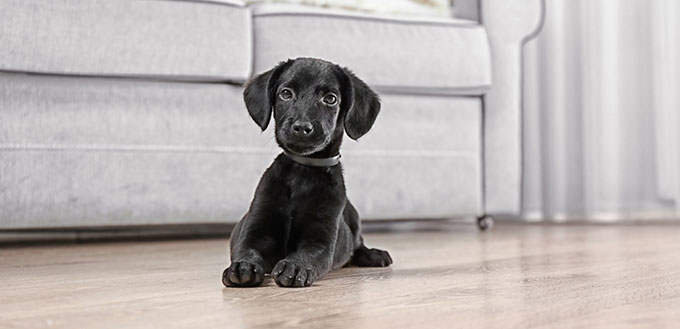
A Dog Crate
At some point, you are going to need to transport your puppy, whether on holiday or to the vet. Puppies often need more regular check ups than adult dogs, and taking them to the vet is much easier when they are secure inside their crate. This means you must have a dog crate ready from day one.
Getting a dog crate can be tricky with a puppy because you will need to estimate the size they will be when they are an adult. Crossbreeds, in particular, are difficult to guess. Any dog being put into a crate for any amount of time must be able to sit, stand, lie down, turn around and stretch out inside the crate. If you wrongly estimate how big your dog is going to be, you must buy a new crate to suit their bigger size.
You must also factor in the bedding and other items you may put in the crate with the dog when you consider how much space they will have. You should line the crate with a soft pad to make your puppy as comfortable a possible, and they may want a toy in there with them to make it a happy space to be in. Do not overload any crate with furnishings, particularly when you are traveling as loose items in the cage can hurt your dog if you find yourself having to brake suddenly.
Related Post: Best Dog Crate Mats
Puppies and dogs both often hate dog crates, so it is a great idea to start training them to use them as soon as you can. Crate training can take a long time and requires patience and positivity. The crate should only ever be used to create a safe and secure home for your dog, whether it is permanent, temporary, or for transportation. It is not to be used as a punishment tool. Not only will this risk making your puppy anxious and fearful, but it will make your life much harder when you need to use the crate because they will resist you if they associate it with negativity.
Some Fun and Useful Toys
A bored puppy is an unhappy puppy. All dogs are more intelligent than we often give them credit for, and some breeds are even more intelligent than that. They need attention, and mental and physical stimulation. A great way to do this is to pay with them and provide them with fun toys. Make sure they are appropriate for your puppy’s age and size, and look out for any choking hazards and other dangers.
Young puppies in particular need chew toys. All dogs love a good chew toy, and many can help strengthen or clean their teeth. However, puppies specifically require chew toys to soothe their gums as they go through the teething process, which starts at 2 weeks and goes on until they are six months old. Just as babies are born without teeth and often cry and struggle with sore gums while they are teething, puppies also experience difficulties growing their teeth.
Puppies generally grow their milk teeth from 2 to 8 weeks old, when these teeth will start to fall out and be replaced with permanent, adult teeth. This period, which usually occurs week 12 to 16, is usually when puppies start to gnaw at you and your furniture. It soothes their gums to chew on something. This is typical and perfectly normal puppy behavior, but if you, understandably, are worried about your furniture being ruined, chew toys for puppies and redirection are the way to go.
Do not scold your puppy for their perfectly natural behavior. They can’t help it, and they will just be hurt and confused. Instead, firmly say ‘No’ when they start to bite, remove what they were biting, replace it with a chew toy, and praise them for using the chew toy. This should help redirect their negative behavior towards a positive one.
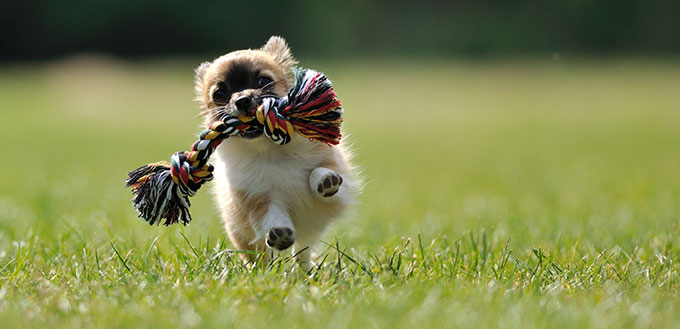
A Veterinarian That You Trust
The most essential asset you will have as a pet owner is a great vet who you trust. The earlier you start to build a relationship with your vet, the better they will know and understand your puppy as they grow into a dog. This will be hugely beneficial in the future for diagnosis and treatment as a vet that has a deep relationship and knowledge of an individual dog will be in a better position to understand what may be wrong and which treatment will work best.
Don’t be afraid to look around to find a vet that fits best with you. After all, you could be in each others’ lives for up to a couple of decades, and a strong relationship between vet and owner is essential to the well-being of your puppy. It is a good idea to ask your friends and family for recommendations and to think about what you want for your vet. Is your puppy a rare breed? Do you want to be supported by a specialist with experience treating your puppy’s breed? Does your puppy have a condition or regular treatment that needs administering? What is your budget for veterinary visits?
Once you have found your veterinarian, you will want to bring your puppy in for an initial assessment and check-up. It is important that you aren’t afraid to ask any questions you have – there is no such thing as a stupid question. Topics that you should discuss may include:
- Feeding advice
- Grooming advice
- Training advice
- Behavior advice
- Teething advice
- Vaccinations
- Sterilization
Puppies often have a number of checkups in their first year to check that they are developing as they should be, but after this it may be up to you to ensure you are visiting your vet at least once a year. As a general rule, you should make sure you never leave your vet without scheduling your next appointment, even if that appointment is a year away. Make sure you write it in your diary and give plenty of notice if it later needs to be changed.
Sources:
- Crate Training Your Dog, The MSPCA–Angell
- Sherry Woodard, Dog Toys, Best Friends Animal Society
- Finding the Right Vet for Your Cat or Dog, WebMD
- How to Make Your New Dog Feel Comfortable in Your Home, The Humane Society of the United States



